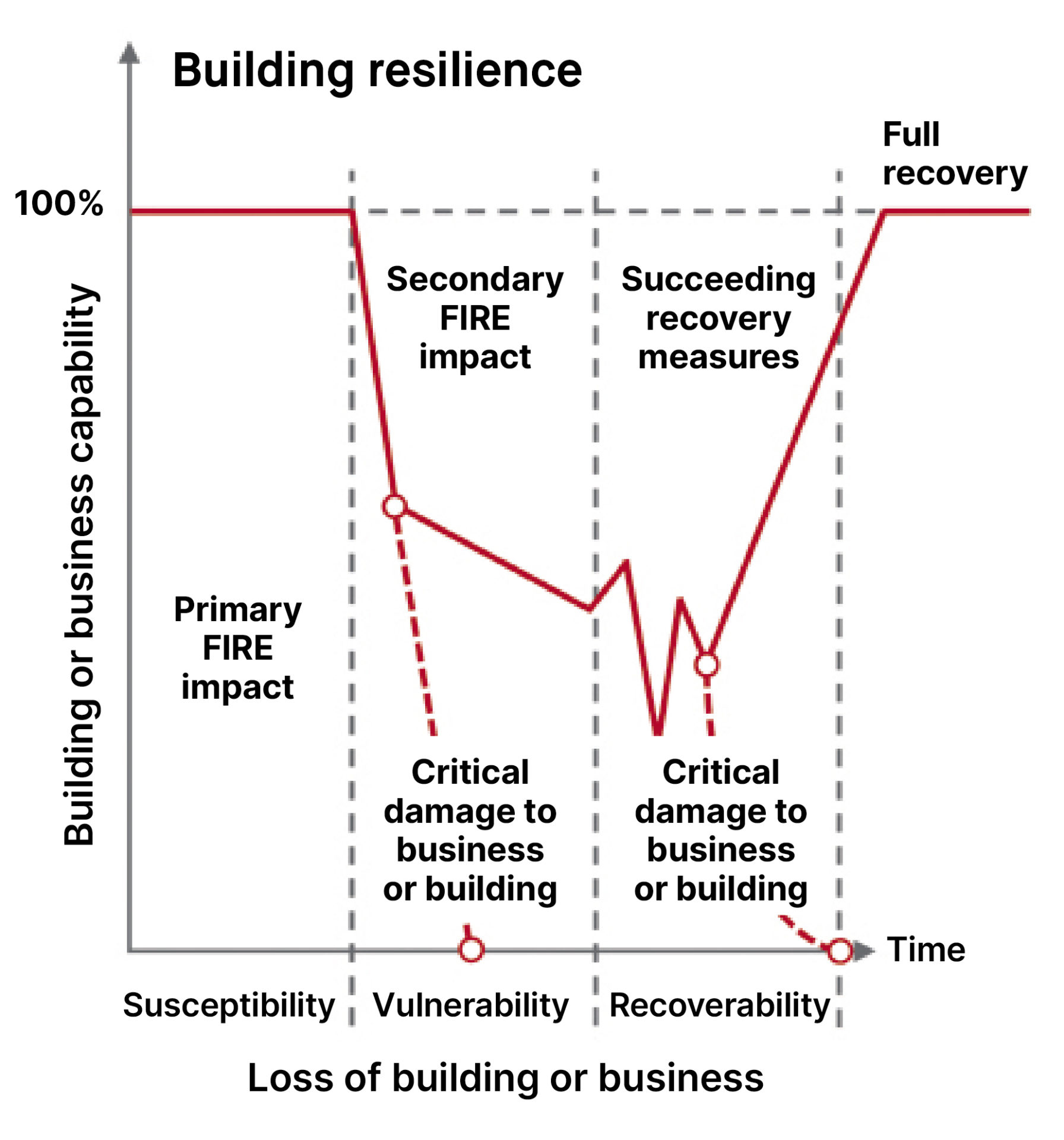Legislation surrounding fire safety outlines minimum requirements for the evacuation of a building in the event of a fire. Focus on life and health is the key concern. However, legislation is not intended to ensure the viability of a building and its contents post fire.
In the case of a commercial property, this could negatively impact business continuity. A robust fire strategy to protect these aspects must be specifically requested during the design of a building.
RISCAuthority, an annually funded research scheme supported by UK insurers, and its sister company, the Fire Protection Association, published BDM01 – A to Z of Essential Principles for the protection of buildings to deal with this very issue.
BDM01 Essential Principles
BDM01 is an orderly recommendation to investors, on behalf of insurers, not to design and build solely to the ‘life safety before collapse’ objective. Instead, it calls for resilient construction innovation beyond statutory guidance or Building Regulations.
A resilience strategy by the initiating investor can ensure the continuity of service a property provides. It can be broken down into three phases:
- Susceptibility: avoiding fire and water-related perils being an issue. For example, a building with non-combustible materials.
- Vulnerability: reducing the extent of damage following a fire event by building in passive fire safety measures.
- Recoverability: improving the recovery to full capability following fire-related events.
BDM01 outlines 26 building protection principles (A to Z). These Essential Principles are split across six decision-making phases:

1. Undertake early consultation.
2. Prevent fire starting.
3. Lower property loss.
4. Enhance design robustness.
5. Check construction achieved.
6. Improve facilities management.
These phases allow decisions to be made on when principles should be considered in building design. However, they are not intended to correspond to the eight work stages in the RIBA Plan of Work 2020 – in this way, the Essential Principles have a loose fit to any plan of work.
The Essential Principles cover events involving both fire and water. The following outlines the key principles relating to passive fire protection:
Source; CIOB, Construction Management magazine


